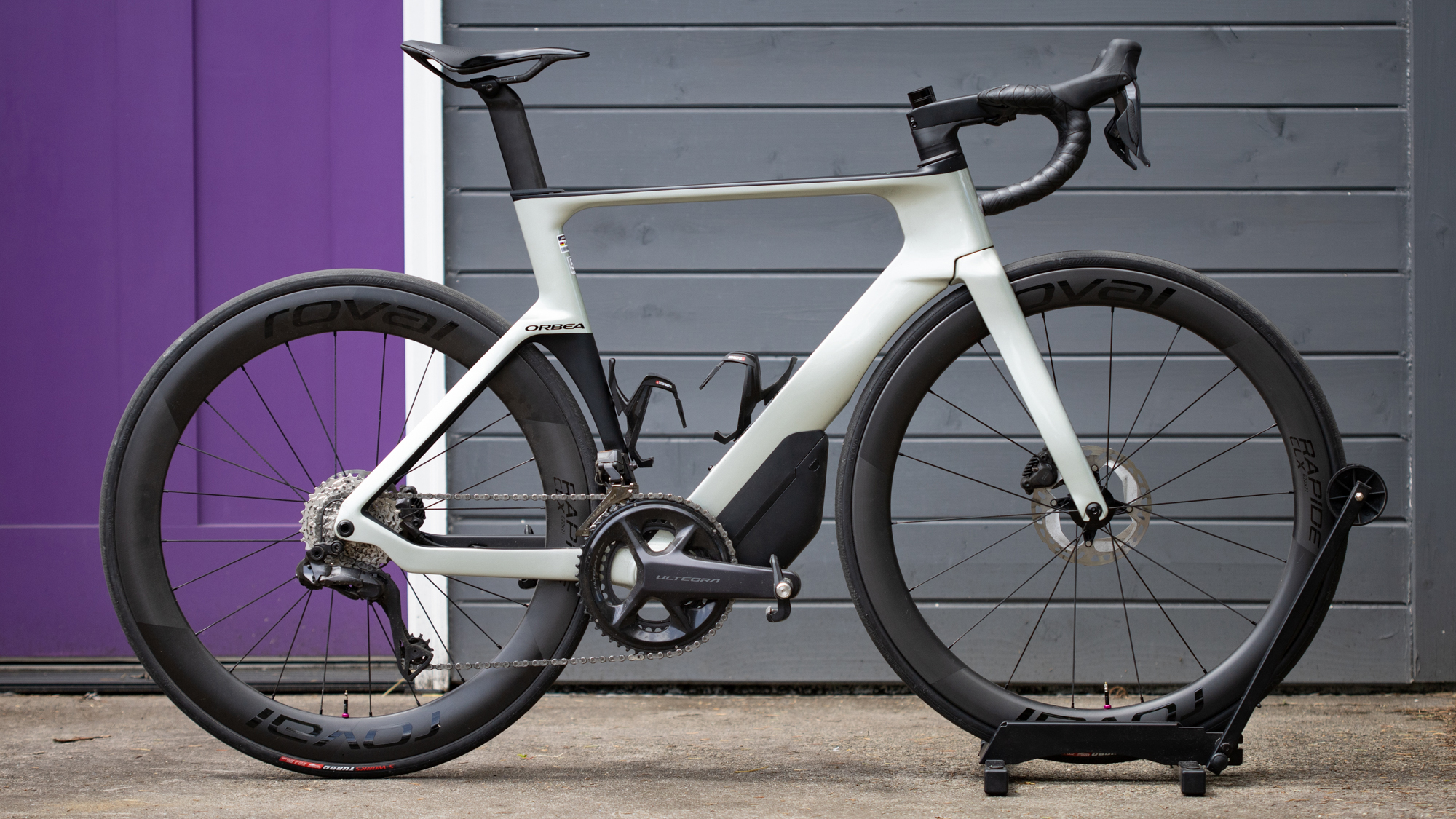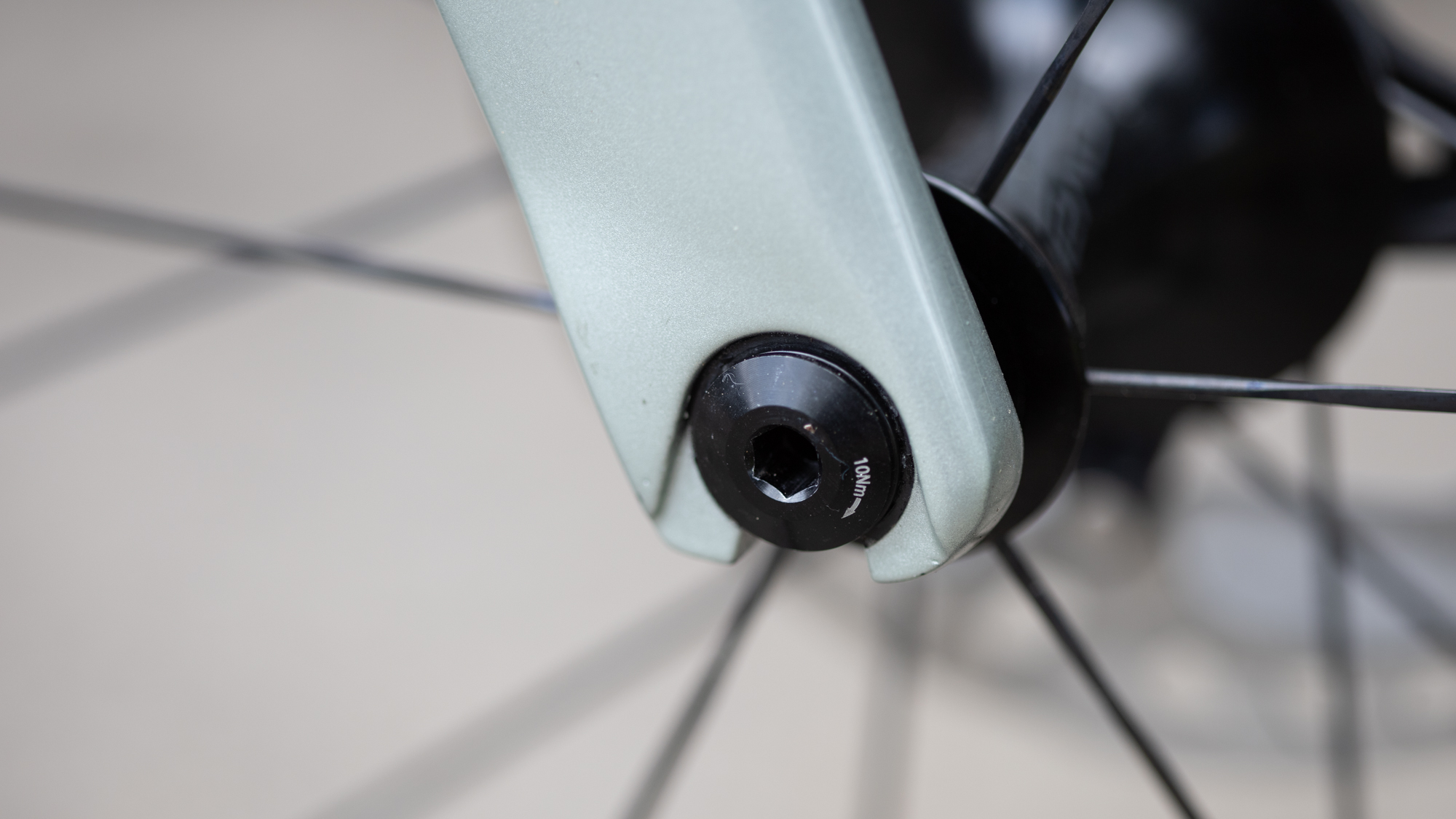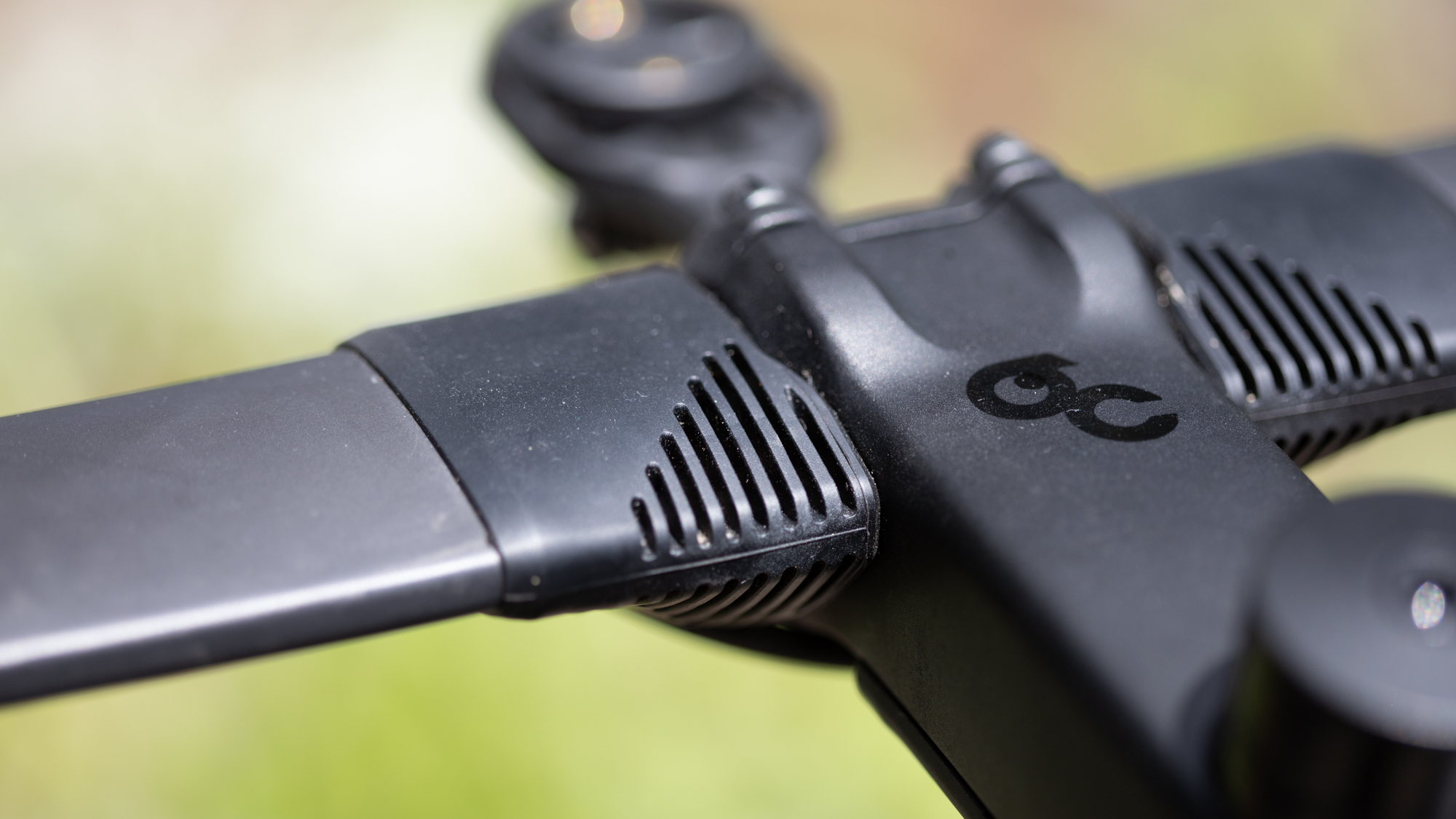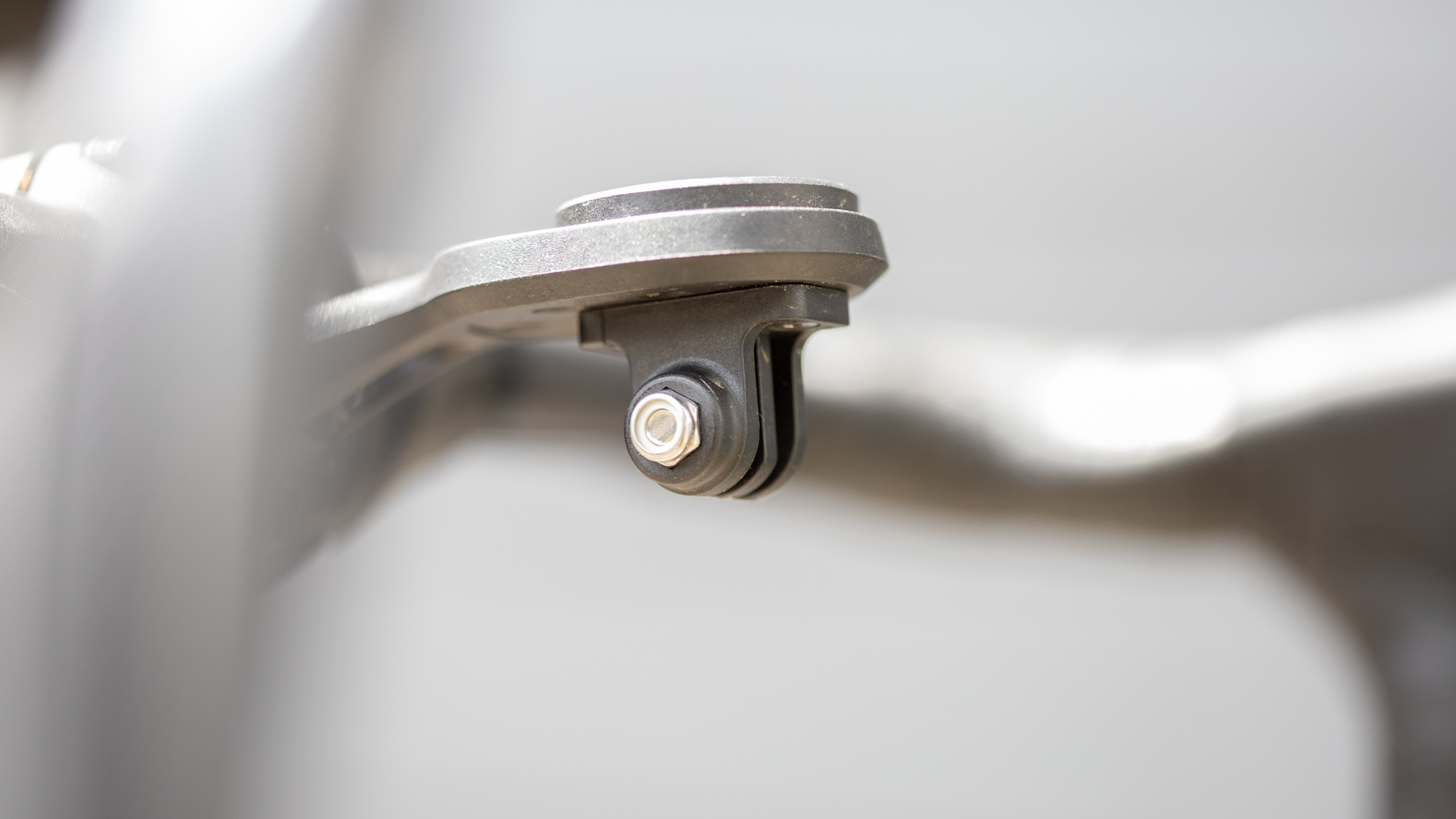Orbea Orca Aero M120iLTD road bike review
An aero road bike so optimized it’s one step away from being an outright time trial bike, is it right for you?

The Orbea Orca Aero M120iLTD road bike is the result of taking aerodynamics to the extreme. It's barely UCI legal, and there's no claim that it's lightweight, but once you've set it up, it is very fast and very capable. Just don't expect it to love tight corners, or windy days.
-
+
The same frame no matter what build
-
+
Very comfortable no matter how long the ride
-
+
Two-piece cockpit is comfortable and adjustable
-
+
Beautiful paint
-
+
Comfortable handlebars
-
-
Doesn’t love tight cornering
-
-
Finicky saddle mount
-
-
Wind will move it around even at low yaw angles
You can trust Cycling Weekly.
As you head out for a weekend ride, the UCI equipment rules probably aren't crossing your mind, but they affect you. The Orbea Orca Aero is a bike that exists partly because of the UCI.
The best aero road bikes started to come to market for consumers, in part, because the UCI set a minimum weight - making it necessary for brands to look elsewhere for marginal gains. This transpired to be a positive step since most experts now agree that aerodynamic optimisations pay greater dividends than low weight on all but the steepest climbs.
The UCI relaxed its specifications on aerodynamics further in 2021, and the Orbea Orca is one of a resulting breed of hyper aero bike. We’ve put in the miles, and the hours, figuring out all the details that make the snappily named 'Orbea Orca Aero M120iLTD' the bike that it is, and we are ready to share our thoughts.
The construction: Orbea Orca Aero M120iLTD
The Orca Aero lineup includes six different build options. Within those options, the basic frame outline remains the same. No matter which build you choose, you get the same level of carbon.
Although Orbea offers both OMX and OMR carbon across their lineup, the Orca Aero gets the lighter OMX, no matter what level of build kit you choose. You also get the same handlebar, stem, and seatpost no matter the build although the frame alone comes without the handlebar, which does represent a fairly large piece of the design puzzle.
Before even getting to the actual tube shapes, there are a couple of pieces that definitely catch your attention. Orbea refers to them as the "Orbea Aero Bottle and Bottle cage Set" and the "Aero Accessory Container." Both pieces are fully removable - which will be music to the ears of those offended by the aesthetics - but they will lead to a faster bike if left installed.
Choosing to use the bottle and cage limits you to one installed bottle, so unless your rides are on the shorter side, you'll need to remove it. When it comes to the Accessory Container, there's no reason you need to remove it unless UCI legality is an issue for you. When in place it helps smooth the air coming off the front wheel and it hides a storage compartment.
The latest race content, interviews, features, reviews and expert buying guides, direct to your inbox!




Jumping back to the frame, the actual spec sheet stays within expectations. It's a disc only frame with carbon monocoque construction, seven available sizes, and internal cable routing. The bottom bracket uses the BB386 standard and the wheels use a thru-axle front and rear. The frame is compatible with the Mavic Speed Release system but comes with standard thru-axles.
There's also full compatibility for both electronic and mechanical groupsets and both options are available depending on the model you choose.

Although not included, the frame is compatible with the Mavic Speed Release system.
In terms of builds, at the top of the lineup the M10iLTD and the M11eLTD represent a choice between Shimano Dura-Ace or SRAM Red AXS and the wheels shift from Shimano C50 to Vision 55. Step down a level and the choice is between SRAM Force AXS or Shimano Ultegra 12-speed, and this time the wheels are the same carbon Vision 40. The last two models available do differ in that they offer either SRAM Rival AXS or, for those looking to stay mechanical, there's 11-speed Ultegra on offer.
This review covers the Shimano equipped M20iLTD. The frame, seatpost, handlebar, aero bottle, and aero accessory container are all included no matter the build. For better, or worse, even the saddle is the same if you choose the top shelf build or the most affordable option. The choices you make are really about groupset and wheels. There is also the option to make use of Orbea MyO and custom build your bike, including paint colors, as you see fit. There's no upcharge for the service.





The ride
The first thing to understand about the Orca Aero M120iLTD is that it's polarizing. That much should be obvious from the images.
The tube shapes are unashamedly rigid looking and focused on aerodynamics. The chainstays are largely flat, then, at the last moment, there's a bit of a kink where the tubing heads back towards the center of the wheel. The top tube is also completely flat and in both cases the point is to stay out of the wind. My favorite pieces though are the sharp edges you find at the trailing edges.
The deep trailing edge of the headtube has particularly sharp details that really catch the eye. As you move lower, with the downtube, there's shaping to help smooth the airflow off the fork and the lower you go, the wider the downtube becomes. The idea is to keep water bottles protected, but this is one area that's a missed opportunity. The design takes into account the supplied aero bottle but that's unlikely to see much use. If you want two bottles, you'll have to use standard bottles and they'll be wider than the downtube. BMC found a solution (with its aero bottle cages) that's more useable and I would have liked to see Orbea do the same.
Then there's the pod under the downtube. Leading up to my opportunity to review this bike I felt sure I would remove it. It looks unconventional and the side view on the Orbea site isn't the best angle for it. As it turns out, in the 850 miles I've covered with the bike I haven't removed it or even considered doing so.
The Orbea Orca Aero is aerodynamically faster with the pod in place. The pod also looks a lot better in person, and there's storage space in there. The storage space isn't much though. I've managed to get a pair of gloves packed, but I was unsuccessful in getting a Sportful Hotpack No Rain emergency jacket to fit. It's not waterproof and anything hard will rattle, so you'll need to get creative about how you use it. You should also expect that anyone who sees the bike will think it's an e-bike battery.




It took me some time to get set up on this bike. Firstly, I had to order extra pieces to fit an oval railed saddle.
The seatpost is easy to adjust, but the saddle adjustment is a bit more difficult. Even once I'd received the appropriate clamps, and got a Cadex Boost saddle in place, I found the saddle would rock in certain situations.
It's a simple mechanism but there's the possibility of movement from the way the tilt adjusts separately. The solution turned out to be greasing the threads before torquing. There will be those reading this shaking their head that I didn't start there, but it's an unusual issue. It's true that getting accurate torque requires lubricated threads, but the actual range for most saddle clamps on bikes is wide enough that it's not an issue. It's an issue on the Orbea.
With that solved, the next conundrum was the gearing. The stock spec is a mid-compact 52/36 crankset paired with an 11-30 cassette. For me, on a bike weighing 8.45kg, I wanted a wider spread - so I swapped the rear cassette for an 11-34, giving me more room to climb.




This is a small bike for its sizing, and Orbea considers a 53 more of a small than a medium. That means you get a 40mm wide handlebar, 100mm stem, and 170mm cranks. I'd love to see a 110mm stem and 172.5 cranks, but the width of the bar is perfect and that bar is one of the best things about the bike. The size of the frame is also perfect for me. I normally ride a 54 but the Orbea 53 matches favorably based on the numbers and I can't rave enough about how comfortable it is.
The bar is so distinctive it does warrant a few words. Instead of internal routing through the handlebar, there's a channel for the cables. Where the bars meet the stem there are rubber sleeves that snug up to the stem and further hide the cables as they dive into the plastic that covers them whilst they route under the stem. The bars are separate from the stem so it's possible to tilt them to meet your needs and you could run a different bar but it would be a loss.
The bar shape is a joy to ride with. To mount a cycling computer you'll need to use the included mount that attaches through the front of the faceplate. It's well designed but it's proprietary and that's a loss. There's enough room for a large computer like the Garmin 1030 plus and you can mount a light to the bottom using a GoPro style mount. If Orbea had gone with something more standard there would be third party options though.
As you'd probably expect, the Orbea Orca Aero is a rocket on the flats. It holds speed incredibly well and the comfortable position helps you to stay as aero as the bike. It also climbs just fine despite its heft. You'll perhaps lose time on the steepest pitches, but the promise of an aero bike is that you get to, and from, the climbs faster.
In stronger winds, the short wheelbase and deep tubes contributed to a feeling of movement that made it hard for me to hold a line, much more so than when riding traditional bikes. It also means that if you swap to a deep wheel that better matches the intentions of the bike, you might want to hold onto the 40mm stock wheels for windy days.

The base 40mm wheels don't match the bike. Given the small upgrade fee to go to a Vision 55 those should be the base option. On the other hand, if you move to something like the Roval Rapide CLX II it might be worth keeping the 40mm option for windy days.
Value
The level of aero-optimization that the Orbea Orca Aero offers puts it in rare company. There's an argument that the Pinarello Dogma F12 and Trek Madone don't match it. The Specialized Venge certainly does but it's not available anymore.
That leaves the Cannondale Systemsix, BMC Timemachine, Cayon Aeroroad, and Cervelo S5 as some of the competition. Among those options, every single one of them includes deep wheels that conceptually match the purpose. If you make use of the Orbea customization options, moving to a Vision 55 wheelset only adds $59, so it's somewhat baffling that Orbea doesn't make that the stock build.
Outside of the wheels, the Orbea puts in a very favorable showing when it comes to value. Cannondale, BMC, and Cervelo options are all more expensive. The Canyon Aeroad is the closest competitor but if you want 12-speed shifting they haven't made that jump for Shimano and the SRAM Force build is more expensive than the equivalent from Orbea.
Orbea Orca Aero M120iLTD Specs
- Price: $6,899 / £5,999
- Weight: 8.45kg as measured with Garmin Varia mount, Orbea computer mount, Roval Rapide wheelset, Garmin Rally RS 200 pedals, and Cadex Boost Saddle
- Frame: Orbea Orca Aero Carbon OMX disc, monocoque construction, HS 1,5", BB 386, powermeter compatible, Thru Axle 12mm x 142mm rear, thread M12x2 P1, Speed release compatible, internal cable routing, EC/DC compatible
- Fork: Orbea Orca Aero OMX ICR, full carbon, 1-1/8" - 1,5" tapered head tube compatible, Thru axle 12x100mm, thread M12x2 P1, Speed release compatible dropout
- Handlebar: OC RA10 Road Aero Carbon, Reach 80, Drop 125, Flare 5, w/Di2 hole
- Stem: OC RP10 Road Performance ICR, -8º, IFC02 Computer mount interface
- Steapost: Orbea Orca Aero OMX, SB0/25, w/Micro tilt adjustment
- Groupset: Shimano ultegra di2 r8100 12-speed 52/36 and 11-30
- Wheels: Vision 40 SC Disc Carbon TLR CL
- Tires: Vittoria Rubino Pro IV G2.0 700x25c
- Saddle: Prologo Dimension T4.0 size143 mm
Josh hails from the Pacific Northwest of the United States but would prefer riding through the desert than the rain. He will happily talk for hours about the minutia of cycling tech but also has an understanding that most people just want things to work. He is a road cyclist at heart and doesn't care much if those roads are paved, dirt, or digital. Although he rarely races, if you ask him to ride from sunrise to sunset the answer will be yes.
Height: 5'9" Weight: 137 lb.
Rides: Orbea Orca Aero, Cannondale Topstone Lefty, Cannondale CAAD9, Trek Checkpoint, Priority Continuum Onyx